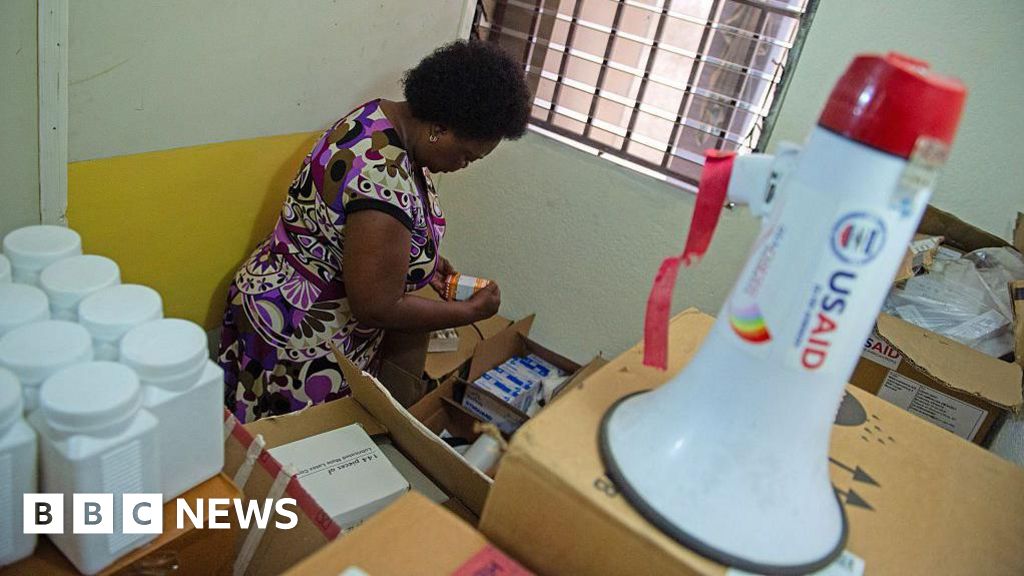- Process of compulsory registration for Hajj 2026 continuing RADIO PAKISTAN
- Pilgrims unable to perform Haj to get full refund Dawn
- Hajj 2026: Govt sets July 9 deadline for mandatory registration of pilgrims Dunya News
- 42,000 pilgrims to return to Pakistan on July 2: PIA Samaa TV
- Senate body discusses plight of 67,000 intending pilgrims who could not perform Hajj Geo.tv
Author: admin
-
Process of compulsory registration for Hajj 2026 continuing – RADIO PAKISTAN
-

Wabtec Announces Second Quarter 2025 Earnings Release Date
Transportation solutions that revolutionize the way the world moves
At Wabtec, we help our customers overcome their toughest challenges by delivering rail and industrial solutions that improve safety, efficiency and productivity.
Wabtec Corporation
30 Isabella Street
Pittsburgh, PA 15212 – USA
Phone: 412-825-1000
Fax: 412-825-1019Continue Reading
-
Sandvik wins major mining equipment order in Mongolia
Sandvik has received a major underground mining equipment order from Oyu Tolgoi LLC, to be used at the Oyu Tolgoi copper-gold mine in Mongolia’s South Gobi Desert. The order is valued at approximately SEK 270 million and was booked in the second quarter, 2025.
The order includes loaders and trucks, and deliveries are expected to begin in October 2025 and continue through November 2026. Oyu Tolgoi, one of the world’s largest known copper-gold deposits, is jointly owned by Rio Tinto and the Government of Mongolia.
“Sandvik loaders and trucks have consistently delivered industry-leading performance for Oyu Tolgoi, and we are very pleased to be able to continue to support safety, productivity and cost efficiency in the mining operations,” says Mats Eriksson, President of business area Mining.
Stockholm, July 2, 2025
Sandvik ABFor further information, contact Louise Tjeder, VP Investor relations, phone: +46 (0) 70782 6374 or Johannes Hellström, Press and Media Relations Manager, phone: +46 (0) 70721 1008
Sandvik wins major mining equipment order in Mongolia (PDF)
Continue Reading
-

Queensland Reds 12-52 British and Irish Lions: Tourists score eight tries in Brisbane
Like last weekend in Perth, the Lions toiled in the early exchanges, the Reds setting about them with a vengeance, the outstanding centre Hunter Paisami leading the charge.
The Lions grew into the game and completely bossed from late in the first half, but they had their issues before the floodgates opened.
The tourists were wasteful, failing to find their range and dropping ball left, right and centre.
There was the old chestnut of a botched restart reception; there were forced passes and hesitant defence. It wasn’t great. They knocked on eight times to the Reds’ one in the opening 40 minutes, some of them with the hosts struggling to hold them out.
First blood went to the Reds, a bust through the Lions midfield by Paisami giving them field position, some heavy carries taking them deeper still. When the line beckoned, Toomaga-Allen lunged and scored.
Harry McLaughlin-Phillips banged over the extras and the Suncorp rocked to the sound of Reds on the march.
The Lions responded when Daly put Freeman over and Russell tied it up with the conversion, but it was not a cue for the Lions to take control.
Rather, it was the precursor for another Reds try, sparked by Porter getting done on the floor. Paisami was involved again before Kalani Thomas’ grubber kick for Josh Flook down the left.
Van der Merwe hesitated in dealing with the bouncing ball and Flook stole in – 12-7 to the Reds.
The imperfections, and perhaps desperation, in the Lions game was clear with a couple of missed opportunities, but they eventually started to make stuff stick.
Porter drove over after a close-range tap penalty from his Leinster and Ireland front-row pal Ronan Kelleher. Russell converted.
Next, Van der Merwe finished off a terrific move in the corner with the help of Ollie Chessum and Jack Conan. Russell launched the conversion from somewhere close to Caxton Street. A pearler.
At the break, the Lions led 21-12. Could have been better, could have been worse.
It improved early in the new half when smart work from Jamison Gibson-Park drew the heat and then slipped an inside pass for Itoje to crash over.
Russell, who could have kicked them over with his eyes closed, did it again – 28-12 Lions. Getting there.
Farrell made big changes at that point, replacing his front-row and his half-backs.
Not many fireworks from the Russell-Gibson-Park axis but more than enough to get excited about.
The rest is a sea of red. Morgan, doing his mightiest to make a statement, which he did, went over from an Alex Mitchell pass. The Lions were now playing with an intensity that the Reds could not deal with.
Freeman got a second, with Morgan heavily involved at the start of that play, then Jones gathered a daft chip ahead from Tim Ryan and ran more than half the length of pitch to score.
A final try came in the last breath, Ringrose scampering over to bring up the half-century.
It was a pleasing night’s work for the Lions, but the sight of Daly in pain in the aftermath was a troubling one.
Like last weekend with Tomos Williams, the Lions are sweating on a medical call.
Continue Reading
-

AJK judge arrested for defying Supreme Court order in drug case
Pakistan
Judge Imtiaz jailed for releasing narcotics dealer despite top court ruling
(Web Desk) – The police in Haveli, Kahuta (Azad Jammu and Kashmir) on Wednesday arrested Sessions Judge Raja Imtiaz Ahmad for unlawfully ordering the release of a narcotics dealer, in defiance of a Supreme Court directive.
The Supreme Court of AJK, led by Chief Justice Raja Saeed Akram Khan, sentenced Judge Imtiaz to three days in jail for contempt of court.
Judge Imtiaz, serving at the Anti-Narcotics Court in Haveli, had released Raja Dilawar Khan—arrested for possessing a large quantity of heroin—on February 16, 2023. This release came despite a clear Supreme Court ruling rejecting bail and instructing a trial decision within six months.
Dilawar, originally denied bail by the lower, high, and supreme courts, fled abroad shortly after his release. At the time, his appeal was still pending, and the SC had explicitly directed that any new bail plea be presented to the top court only.
More to read: SC declares PTI ineligible for reserved seats, upholds review petitions
Following these events, Judge Imtiaz was suspended a month ago by order of the SC, and a formal inquiry was launched into his conduct.
‘ ;
var i = Math.floor(r_text.length * Math.random());
document.write(r_text[i]);Continue Reading
-

Porsche is expanding its range of all-wheel-drive versions of the 911
Porsche is expanding its 911 series with three models. The latest edition of the Carrera 4S is being launched as a coupé and cabriolet. Together with the Targa 4S, they expand the model lineup beneath the significantly more powerful GTS models. This premiere doubles the number of all-wheel-drive variants of the 911, bringing the total to six. Its extensively revised powertrain gives the all-wheel-drive sports car a significant boost in emotionality compared to its predecessor models. Additional individualisation options and an expanded list of standard equipment round off the overall package.
About half of all customers who choose the S variants of the 911 opt for all-wheel drive, and for good reason: it ensures maximum traction in poor weather. Particularly in regions with changeable climates or demanding road conditions, the 911 with all-wheel drive inspires additional confidence behind the wheel. Like all the all-wheel-drive models of the 911, the S variants are also designed with rear-biased driving dynamics. If required, the Porsche Traction Management (PTM) system provides more drive torque to the front axle, thereby increasing traction and driving stability. As with predecessor models, the clutch assembly in the front differential, which is still water-cooled, is controlled electromechanically. Only the gear ratio has been slightly adjusted. The 911 Targa body style is available exclusively with all-wheel drive.
Improved driving performance
The new all-wheel drive variants of the 911 adopt the upgraded drive system of the Carrera S. Its 3.0-litre twin-turbo six-cylinder boxer engine produces 353 kW (480 PS, 911 Carrera S: Fuel consumption* combined (WLTP) 10.8 – 10.3 l/100 km, CO₂ emissions* combined (WLTP) 244 – 232 g/km, CO₂ class G , CO₂ class weighted combined G ). That is 22 kW (30 PS) more than in the predecessor model. This increase in performance is partly due to the optimised intercooler system, the design of which is carried over from the 911 Turbo. An eight-speed Porsche dual-clutch transmission (PDK) transmits power to all four wheels. The 911 Carrera 4S Coupé accelerates from 0 to 100 km/h in 3.3 seconds (with Sport Chrono Package) and to a top speed of 308 km/h.
Sixty years of the 911 Targa: an idea with a history
For 60 years, the 911 Targa has combined the pleasure of a convertible with the year-round comfort of a coupé. The original version of this model was Porsche’s response to discussions and concerns in the US market regarding the safety of traditional convertibles. The Targa body style made its debut in September 1965 at the IAA in Frankfurt am Main and was dubbed as the ‘safety cabriolet’.
Like so many Porsche innovations, the elegant, wide roll bar is inspired by motorsport. With a removable roof and folding rear window, the car provided safety-conscious drivers the sensation of travelling in a full convertible. Porsche derived the Targa name from the famous Sicilian endurance race, the Targa Florio.
Today, the Porsche 911 Targa is an icon in its own right, constantly further developed in terms of engineering and design over six decades. With the introduction of the 993-generation 911 Targa in 1993, there was no longer a need to remove the roof manually. Since 2006, the 911 Targa has been available exclusively with all-wheel drive.
From 2014 onwards, fully automatic roof mechanisms have been used: in 19 seconds, the coupé-like sports car is transformed into an open-top vehicle in a spectacular choreographed sequence. The glass rear window folds backwards and the roof segment folds elegantly. The wide roll bar and the wraparound rear window are a clear reminiscence of the original model. The roof module of the current Targa is available in four colours: black, blue, red and brown.
Enhanced equipment
The standard equipment has been significantly upgraded compared to the previous models. This includes 20/21-inch staggered-fitment Carrera S wheels with an updated design, Porsche Torque Vectoring Plus (PTV+) and a sports exhaust system with a distinctive sound typical of the 911.
Equipped as standard is the braking system carried over from the GTS models, with red brake callipers and 408-millimetre discs at the front and 380 mm at the rear. The 911 Targa 4S features rear-wheel steering as standard. While the Cabriolet and Targa are equipped with rear seats, Porsche delivers the coupé as a two-seater as standard. A rear seat system can be configured at no extra cost.
Porsche equips the interior of the all-wheel-drive sports car with a leather package. In addition, matrix LED headlights and wireless smartphone charging are also included as standard. Other features include electrically folding exterior mirrors with mirror surround lighting, the Light Design Package, automatically dimming interior and exterior mirrors with integrated rain sensor, and lane departure warning. A wide range of other options for individualisation are available on request, including a wide variety of colour and material combinations as well as sound, assistance and roof systems.
Continue Reading
-

VS Code’s Open Source AI Revolution: A New Chapter for Developers
The development landscape has just undergone a dramatic shift. Microsoft’s VS Code team has taken a bold step toward democratizing AI-powered coding by open-sourcing its GitHub Copilot Chat extension under the MIT license. This milestone represents more than just another code release; it’s a fundamental reimagining of how AI tools should be developed and deployed in the developer ecosystem.
Breaking Down Barriers to Innovation
The decision to make VS Code an open-source AI editor addresses a growing concern in the developer community: The black-box nature of AI coding assistants. Until now, developers have been using powerful AI tools without understanding their inner workings, from prompt engineering techniques to context handling strategies. This transparency gap has hindered innovation, making it challenging for developers to fully optimize their AI-assisted workflows.
By open-sourcing the Copilot Chat extension, Microsoft has lifted the veil on these critical components. Developers can now examine exactly how agent mode functions, understand what context gets sent to large language models and study the prompt engineering strategies that make these tools effective. This level of transparency transforms AI coding from a mysterious process into something developers can understand, modify, and improve.
Community-Driven AI Development
The open source approach leverages the same community dynamics that made VS Code itself a success. Over the past decade, VS Code has evolved from a Microsoft project into a community-driven platform, with thousands of extensions and contributions from developers worldwide. Now, the VS Code team is applying this proven model to AI functionality.
This community-centric approach promises to accelerate innovation in ways closed development cannot match. When developers can see precisely how AI features work, they can identify areas for improvement, fix bugs, and adapt functionality to meet specific needs. The collective intelligence of the open-source community often surpasses what any single organization can achieve, regardless of its resources.
Practical Benefits for Development Teams
The immediate practical implications are significant. Development teams can now audit AI functionality to ensure it meets their security and compliance requirements. Organizations with strict data governance policies can examine exactly what information is transmitted to language models and modify their behavior accordingly.
For individual developers, this transparency enables more effective prompt engineering and a better understanding of AI behavior. Instead of treating AI coding assistants as unpredictable tools, developers can study successful patterns and apply them more systematically. The ability to examine system prompts and implementation details provides insights that can improve AI-assisted productivity across entire teams.
“This marks Microsoft’s follow-through to open source GitHub Copilot Chat, announced at Microsoft Build 2025,” said Mitch Ashley, VP practice lead of software lifecycle engineering at The Futurum Group. “GitHub Copilot Chat serves as the direct interface between the developer and the underlying AI code generation and agent capabilities available through VS Code and GitHub Copilot Agent. This transparency helps build trust with developers as AI takes on increased workloads for developers.”Technical Architecture and Integration Strategy
The VS Code team’s technical approach demonstrates thoughtful planning for long-term sustainability. Rather than keeping AI functionality in a separate extension indefinitely, they plan to integrate components directly into VS Code’s core. This integration strategy ensures that AI becomes a first-class citizen in the editor, rather than an afterthought.
The decision to maintain issue tracking in the central VS Code repository further reinforces this integration philosophy. It signals that AI functionality isn’t a side project but a central part of VS Code’s future direction. This architectural approach provides a foundation for more sophisticated AI features while maintaining the editor’s performance and reliability standards.
Industry Implications and Future Outlook
This move represents a broader shift in how technology companies approach AI development. As AI becomes integral to software development workflows, the traditional closed-source model creates dependencies that many organizations find uncomfortable. Microsoft’s decision to embrace transparency could pressure other AI tool providers to follow suit.
The implications extend beyond individual developer productivity. Educational institutions can now use real AI implementations to teach prompt engineering and AI integration techniques. Researchers gain access to production-quality AI coding systems for academic study. Security researchers can audit AI tools for potential vulnerabilities or biases.
Challenges and Considerations
Open-sourcing AI functionality presents its challenges. The VS Code team must strike a balance between transparency, performance optimization and consistency in user experience. Managing community contributions while maintaining code quality requires significant investment in review processes and documentation.
The partial approach, open-sourcing chat functionality while keeping inline completions closed, reflects these complexities. This staged rollout allows the team to learn from community feedback before expanding the open-source scope to more complex features.
The Path Forward
The VS Code team’s roadmap demonstrates a commitment to gradually expanding open-source AI functionality. Plans to provide inline completion capabilities through the open-source extension demonstrate long-term dedication to the transparency vision. A partnership with the broader open-source AI community suggests that the success of this initiative depends on ecosystem-wide collaboration.
This milestone represents more than a technical achievement; it’s a fundamental shift toward more democratic, transparent and community-driven AI development. As artificial intelligence reshapes software development, having open, auditable and modifiable AI tools becomes increasingly important for maintaining developer agency and innovation.
The future of coding is undoubtedly AI-assisted, but Microsoft’s approach ensures that the future remains open, transparent and community-controlled. For developers who value understanding their tools and shaping their evolution, this represents a significant step toward a more empowering development environment.
Continue Reading
-

USAID officially closes, attracting condemnation from Obama and Bush
The US Agency for International Development (USAID) has officially closed its doors after President Donald Trump gradually dismantled the agency over its allegedly wasteful spending.
More than 80% of all the agency’s programmes were cancelled as of March, and on Tuesday the remainder were formally absorbed by the state department.
The shuttering of USAID – which administered aid for the US government, the world’s largest such provider – has been newly criticised by former Presidents Barack Obama and George W Bush.
These aid cuts could cause more than 14 million additional deaths by 2030, according to a warning published by researchers in the Lancet medical journal.
The authors of the Lancet report called the numbers “staggering”, and projected that a third of those at risk of premature deaths were children.
A state department official said the study used “incorrect assumptions” and insisted that the US would continue to administer aid in a “more efficient” way, the AFP news agency reported.
Founded in 1961, USAID previously employed some 10,000 people, two-thirds of whom worked overseas, according to the Congressional Research Service.
The controversial cuts began early in Trump’s second term, when billionaire and former presidential adviser Elon Musk was tasked with shrinking the federal workforce.
The move was widely condemned by humanitarian organisations around the world.
Among the programmes that were curbed were efforts to provide prosthetic limbs to soldiers injured in Ukraine, to clear landmines in various countries, and to contain the spread of Ebola in Africa.
On Wednesday morning, the agency’s website continued to display a message saying that all USAID direct-hire personnel globally had been placed on administrative leave from 23 February.
Secretary of State Marco Rubio previously said that the remaining 1,000 programmes after the cuts would be administered under his department.
“This era of government-sanctioned inefficiency has officially come to an end,” he added on Tuesday.
“Under the Trump Administration, we will finally have a foreign funding mission in America that prioritizes our national interests,” he wrote in a post on Substack.
Trump has repeatedly said he wants overseas spending to be closely aligned with his “America First” approach.
Bush and Obama delivered their messages of condemnation in a video conference they hosted with U2 singer Bono for thousands of members the USAID community.
Bush, a fellow member of Trump’s Republican Party, focused on the impact of cuts to an AIDS and HIV programme that was started by his administration and subsequently credited with saving 25 million lives.
“You’ve showed the great strength of America through your work – and that is your good heart,” Bush told USAID workers in a recorded statement, according to US media. “Is it in our national interests that 25 million people who would have died now live? I think it is, and so do you.”
Meanwhile Obama, a member of the opposition Democratic Party, affirmed the work that USAID employees had already done.
“Gutting USAID is a travesty, and it’s a tragedy. Because it’s some of the most important work happening anywhere in the world,” Obama was quoted as saying.
Long-time humanitarian advocate Bono spoke about the millions of people who he said could die because of the cuts.
“They called you crooks, when you were the best of us,” he told attendees of the video conference.
USAID was seen as integral to the global aid system. After Trump’s cuts were announced, other countries followed suit with their own reductions – including the UK, France and Germany.
Last month, the United Nations said it was dealing with “the deepest funding cuts ever to hit the international humanitarian sector”.
Continue Reading
-

thinner foldable with bigger battery
Honor launched the Honor Magic V5 on Wednesday July 2, as it looks to challenge Samsung in the foldable space.
Honor
Honor on Wednesday touted the slimness and battery capacity of its newly launched thin foldable phone, as it lays down a fresh challenge to market leader Samsung.
The Honor Magic V5 goes will initially go on sale in China, but the Chinese tech firm will likely bring the device to international markets later this year.
The company, which spun off from Chinese tech giant Huawei in 2020, is looking to stand out from rivals with key features of the Magic V5, like artificial intelligence, battery and size.
Honor said the Magic V5 is 8.8 mm to 9mm when folded, depending on the color choice. The phone’s predecessor, the Magic V3 — Honor skipped the Magic V4 name — was 9.2 mm when folded. Honor said the Magic V5 weighs 217 grams to 222 grams, again, depending on the color model. The previous version was 226 grams.
In China, Honor will launch a special 1 terabyte storage size version of the Magic V5, which it says will have a battery capacity of more than 6000 milliampere-hour — among the highest for foldable phones.
Honor has tried hard to tout these features, as competition in foldables ramps up, even as these types of devices have a very small share of the overall smartphone market.
Honor vs. Samsung
Foldables represented less than 2% of the overall smartphone market in 2024, according to International Data Corporation. Samsung was the biggest player with 34% market share followed by Huawei with just under 24%, IDC added. Honor took the fourth spot with a nearly 11% share.
Honor is looking to get a head start on Samsung, which has its own foldable launch next week on July 9.
Francisco Jeronimo, a vice president at the International Data Corporation, said the Magic V5 is a strong offering from Honor.
“This is the dream foldable smartphone that any user who is interested in this category will think of,” Jeronimo told CNBC, pointing to features such as the battery.
“This phone continues to push the bar forward, and it will challenge Samsung as they are about to launch their seventh generation of foldable phones,” he added.
The thinness of a foldable phone has become a battleground for smartphone makers to appeal to consumers who want the large screen size the device has to offer without extra weight.
At its event next week, Samsung is expected to release a foldable that is thinner than its predecessor and could come close to challenging Honor’s offering by way of size, analysts said. If that happens, then Honor will be facing more competition, especially against Samsung, which has a bigger global footprint.
“The biggest challenge for Honor is the brand equity and distribution reach vs Samsung, where the Korean vendor has the edge,” Neil Shah, co-founder of Counterpoint Research, told CNBC.
Honor’s push into international markets beyond China is still fairly young, with the company looking to build up its brand.
“Further, if Samsung catches up with a thinner form-factor in upcoming iterations, as it has been the real pioneer in foldables with its vertical integration expertise from displays to batteries, the differentiating factor might narrow for Honor,” Shah added.
Vertical integration refers to when a company owns several parts of a product’s supply chain. Samsung has a display and battery business which provides the components for its foldables.
Honor talks up AI
Smartphone players, including Honor, have also looked to stand out via the AI features available on their device.
In March, Honor pledged a $10 billion investment in AI over the next five years, with part of that going toward the development of next-generation agents that are seen as more advanced personal assistants.
Honor said its AI assistant Yoyo can interact with other AI models, such as those created by DeepSeek and Alibaba in China, to create presentation decks.
The company also flagged its AI agent can hail a taxi ride across multiple apps in China, automatically accepting the quickest ride to arrive? and cancelling the rest.
Continue Reading
-

Glucose Monitoring Shows Dysglycaemia in Premature Infants
TOPLINE:
In very low birth weight (VLBW) infants, continuous glucose monitoring (CGM) at 36 weeks of postmenstrual age (PMA) revealed subclinical dysglycaemia; male infants showed prolonged hyperglycaemia, and prior insulin therapy predicted extended hypoglycaemia.
METHODOLOGY:
- Researchers evaluated the prevalence of dysglycaemia in VLBW infants at 36 weeks of PMA through CGM and investigated associated risk factors.
- The prospective cohort included 35 VLBW infants (mean gestational age, 27.3 weeks; 65.7% female infants; mean birth weight, 929 g) who were assessed at 36 weeks from 2016 to 2019.
- CGM was performed at 36 weeks of PMA using a blinded Dexcom G4 sensor for 48 hours, with dysglycaemia defined as glucose concentrations > 8 mmol/L (hyperglycaemia) or < 2.6 mmol/L (hypoglycaemia) sustained for at least 30 minutes.
- Researchers analysed risk factors (sex and prior insulin therapy) against capillary glucose correlations.
TAKEAWAY:
- Overall, dysglycaemia was detected in 68.6% of infants; 28.6% of infants had hyperglycaemia alone, 17.1% had hypoglycaemia alone, and 22.9% had both.
- Male sex was linked to a longer duration of hyperglycaemia (B = 252.172; CI, 101.484-402.86; P = .002).
- Prior insulin treatment led to an increase in the duration of hypoglycaemia (B = 68.607; CI, 9.932-127.283; P = .023).
- Lower birth size and bronchopulmonary dysplasia were also associated with dysglycaemia.
IN PRACTICE:
“Male sex is associated with longer time spent in hyperglycemia and insulin treatment during the admission period is associated with longer time spent in hypoglycemia nearing term age. It is possible that these infants may require more rigorous monitoring of their glucose concentrations even when nearing term age,” the authors wrote.
SOURCE:
This study was led by Itay Nilsson Zamir, Department of Clinical Sciences, Pediatrics, Umeå University, Umeå, Sweden. It was published online on June 27, 2025, in the European Journal of Pediatrics.
LIMITATIONS:
The single-centre study design and small sample size may have limited generalisability. The CGM device used (Dexcom G4) had a higher-than-ideal mean absolute relative difference (18.8%). Calibrations relied on point-of-care glucometers rather than on laboratory-analysed values.
DISCLOSURES:
This study was supported by research grants from Umeå University and other sources. The CGM system was donated by Dexcom Inc., which had no role in the study design, data analysis, or publication. The authors declared having no competing interests.
This article was created using several editorial tools, including AI, as part of the process. Human editors reviewed this content before publication.
Continue Reading